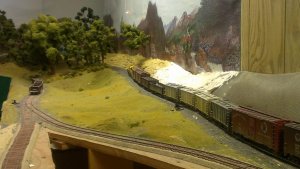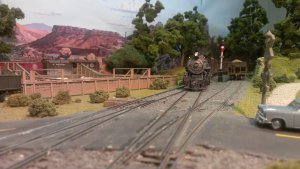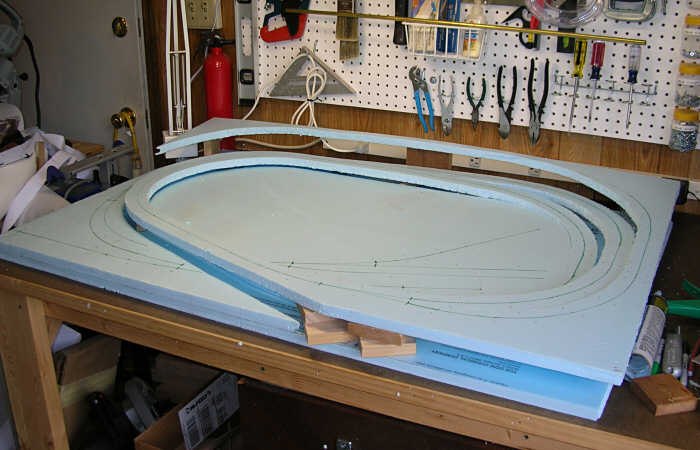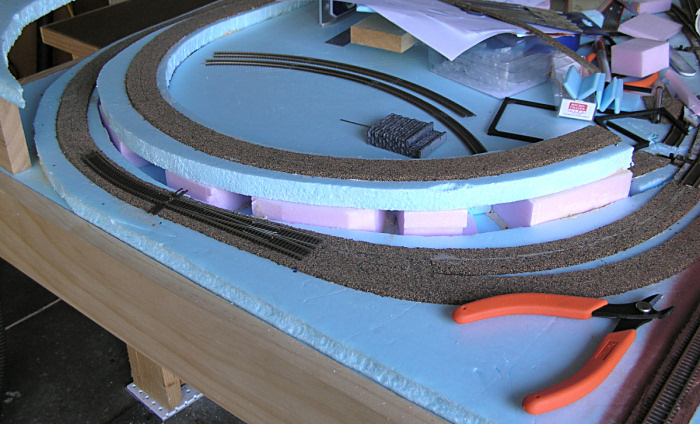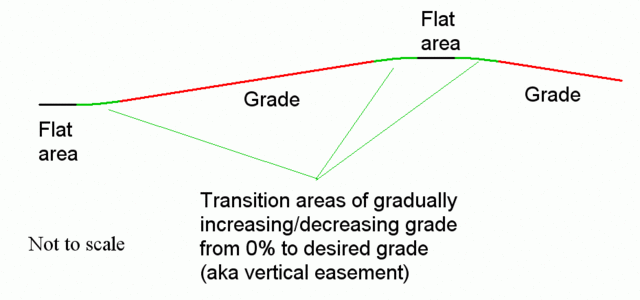DairyStateDad
Mumbling in the corner
As I fine-tune my plan, I'm working now on making sure the grades are going to work.
Generally I'm trying to keep all grades below 3%, and even shallower as much as possible. It's a matter of optimizing grade vs. clearance at the one portion of the design where there is track over other track.
I plan to run mostly short trains anyway, and I wouldn't rule out a "helper district" on one stretch if it seems necessary (in fact, that could be kinda fun).
One factor I'm concerned about is transitions, especially from flat to grade.
I've seen a couple of different approaches on the forums...
One is fairly basic: make the first foot rise 1/8 inch, then go into the actual grade.
Another is much more complicated, involving 1) calculating your maximum rolling stock or loco length and then 2) raising your grade in 1/2% increments for a series of car lengths. Eg, 1/2% for first car length is at 1/2% grade, second car length is at 1% grade, third car length is at 1.5% grade, and so on, until you're at the desired grade.
However, that requires either extending the entire grade run or else making the final grade higher than the total average grade for the ascent.
(I made a very complicated spreadsheet trying to work this out, but it's pretty much a mess now... )
)
So any suggestions on how to make this simple without overthinking it (which is my specialty ) ?
) ?
Erik
Generally I'm trying to keep all grades below 3%, and even shallower as much as possible. It's a matter of optimizing grade vs. clearance at the one portion of the design where there is track over other track.
I plan to run mostly short trains anyway, and I wouldn't rule out a "helper district" on one stretch if it seems necessary (in fact, that could be kinda fun).
One factor I'm concerned about is transitions, especially from flat to grade.
I've seen a couple of different approaches on the forums...
One is fairly basic: make the first foot rise 1/8 inch, then go into the actual grade.
Another is much more complicated, involving 1) calculating your maximum rolling stock or loco length and then 2) raising your grade in 1/2% increments for a series of car lengths. Eg, 1/2% for first car length is at 1/2% grade, second car length is at 1% grade, third car length is at 1.5% grade, and so on, until you're at the desired grade.
However, that requires either extending the entire grade run or else making the final grade higher than the total average grade for the ascent.
(I made a very complicated spreadsheet trying to work this out, but it's pretty much a mess now...
So any suggestions on how to make this simple without overthinking it (which is my specialty
Erik

